Email: sabrangind@gmail.com
Update on the ‘Phantom Voters’ story
Aarey Adivasis demand forest rights, implementation of FRA
Adivasi residents of 27 hamlets located inside Mumbai’s famous Aarey Milk Colony, a sprawling forest in the heart of the city, hit the streets on Tuesday demanding rights to their traditional land, access to facilities and the implementation of Forest Rights Act 2006. Around 500 Adivasis were present at the protest where they expressed their stand using traditional songs, dancing and placards. The protest was organised under the auspices of Adivasi Hakk Savardhan Samiti.
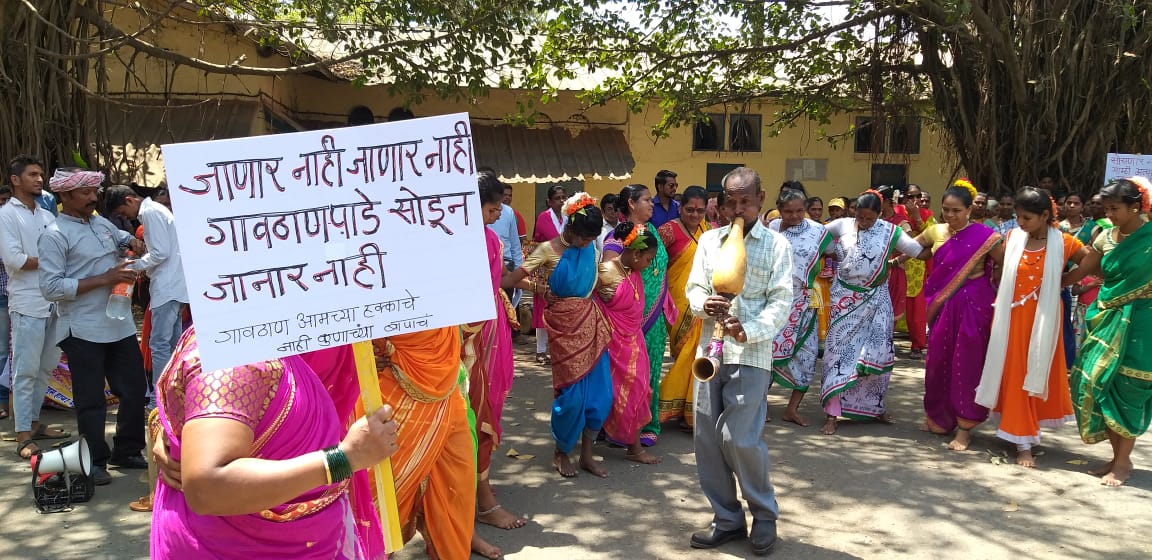
“We don’t want to be forced out of our traditional lands. These lands have been being tilled by us for generations and we should be accorded all rights to them under the Forest Rights Act,” said Dinesh Habale of the Adivasi Hakk Savardhan Samiti. The region is currently under threat due to the construction of the proposed carshed for Mumbai Metro. The land has also been long coveted by the builder lobby.
The Adivasis of Aarey were joined by fellow Adivasis from all over the city, Palghar and many environmentalists. Those present at the protest spoke about how despite being “Moolniwasis” or original residents they still had to ask for permission for facilities in their own lands. Many also spoke of the unbreakable bond they had with the forests, their preservation and how Adivasis can’t exist without them.
“The land is traditionally ours, yet we are treated like encroachers,” said Shashi Sonawane of Bhoomiputra Bachao Andolan from Palghar. “The Adivasis are the traditional preservers of the forests and we stand with them in their demand for the implementation of the Forest Rights Act,” said Amrita Bhattacharjee of the Aarey Conservation Group.
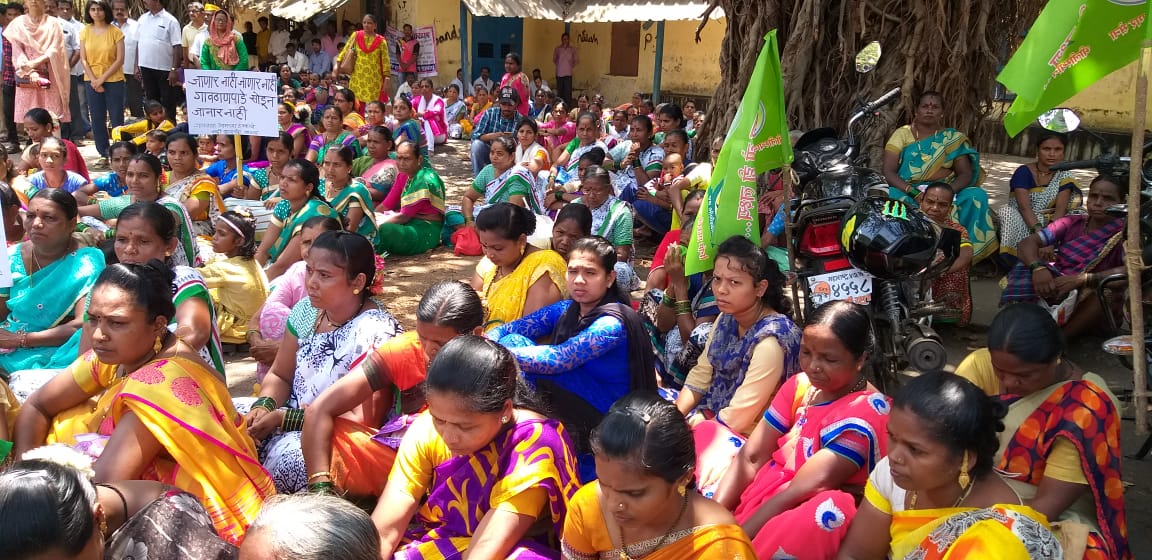
CJP has long been associated with the nationwide movement for the implementation of the Forest Rights Act 2006 that grants Adivasis and forest workers rights to forest land and produce. Click here to learn more about our campaign.
FIR against editor Vishweshwar Bhat for allegedly discrediting Karnataka CM’s son
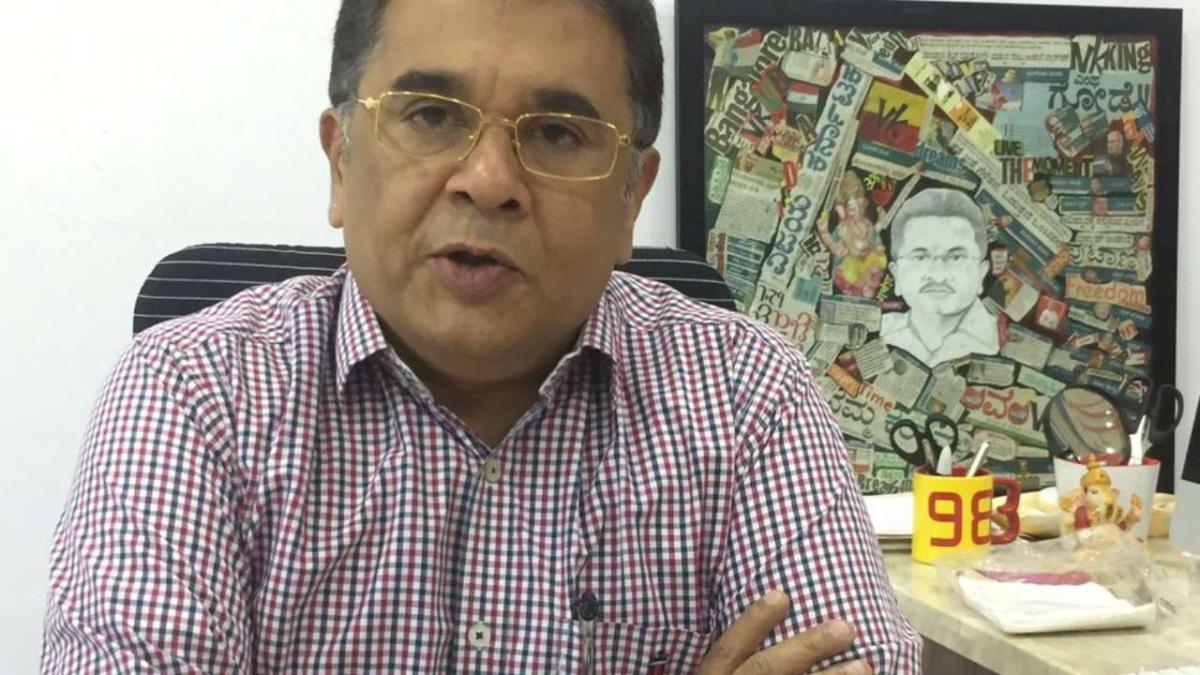
As reported in the NDTV, on Saturday, Bhat had published a source-based article in his newspaper on an alleged heated conversation between Nikhil Kumaraswamy and his grandfather, former prime minister HD Deve Gowda which allegedly took place on Friday at a hotel in Mysuru.
According to Bhat’s article, Nikhil had a meltdown after he lost the Mandya seat, prestigious for the Gowda family and their party Janata Dal (Secular), to BJP-backed independent candidate Sumalatha Ambareesh, a woman. The article further alleges that Nikhil was unhappy that his cousin, Prajwal Revanna, was fielded from Hassan and that he won. Further, it says that his family party had not done enough to ensure his victory at the beginning of his political career.
General secretary of the legal cell, JD(S), Pradeep Kumar, filed a FIR against Bhat for defamation, forgery and cheating. According to the complaint, Bhat’s article has tarnished the image of a young politician merely for extracting money.
Speaking to ANI, Bhat said, “I will seek legal remedies. I have not taken anticipatory bail for the case because I am 100% convinced that I have not committed any crime. Let them arrest me if they want to.”
He further added that it is not possible to control the media in the digital age, saying, “It is a dangerous trend for democracy and you cannot control the media as social media is so active these days.”
Related Articles:
Protest outside Mumbai’s Nair Hospital demanding justice for Dr Payal Tadvi
Hundreds of Mumbaikars gathered outside Nair Hospital on Tuesday expressing solidarity with and demanding justice for Dr Payal Tadvi, whose institutional murder has once again brought to light the indignities people hailing from oppressed castes and tribes are forced to suffer.
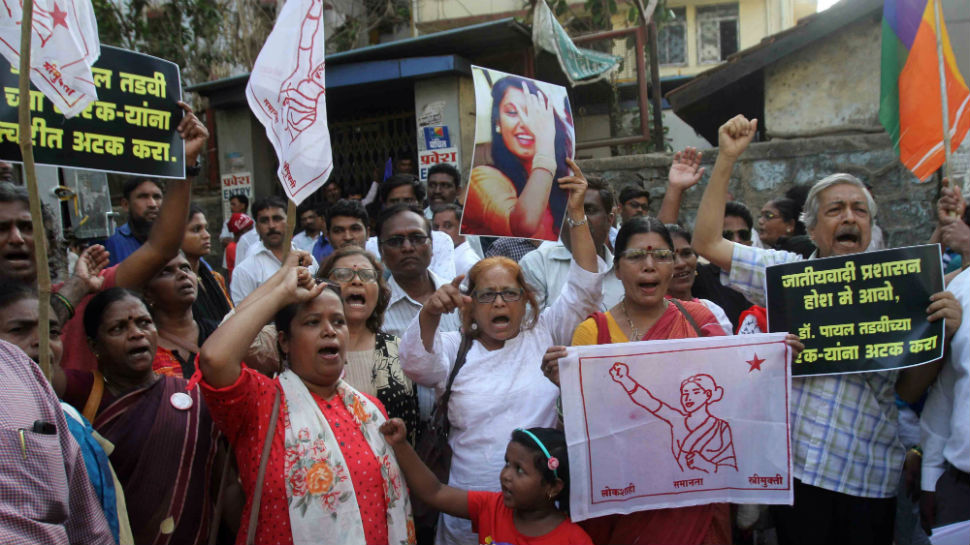
Image Courtesy: ANI
The demonstration was led by Dr Tadvi’s mother Abeda and husband Dr Salman. Demanding justice and raising graver questions about the institutional murder of his wife Dr Salman told India Today, “We want the government to intervene. The police are not taking any action. It is possible that Payal was murdered by the three women doctors.”
The protest saw a huge participation from students, especially those who come from Dalit, Bahujan and Adivasi backgrounds. Several Adivasi rights organisations were also present at the protest.
Brief background of the case:
On May 22, Dr Payal Tadvi, a 23 year old doctor hailing from a tribal community in Jalgaon allegedly committed suicide at her hostel in Mumbai’s prestigious Nair Hospital after being allegedly harassed by three seniors who would use casteist slurs against her. According to friends and colleagues, three senior doctors harassed Tadvi and used casteist slurs while addressing her and even mocked her on Whatsapp groups. They have been identified as Hema Ahuja, Bhakti Mehar and Ankita Khandelwal.
Even after repeated complaints, the hospital administration failed to take action against the perpetrators. This makes it a case of institutional murder, not unlike that of Hyderabad University student Rohith Vemula.
Action taken:
An FIR has been registered against them under sections of the Prevention of Atrocities against SC/ST Act, IT Act, as well as section 306 of the IPC. The Maharashtra Association of Resident Doctors (MARD) has also suspended the trio’s registration. Gynaecology unit head Dr. Yi Chin Ling has also been suspended.
Even as the protests took place on Tuesday, the BMC followed in the MARD’s footsteps and suspended the licenses of the accused pending an inquiry. The Maharashtra State Commission for Women has also taken suo mostu cognizance of the case and written to the dean of the hospital demanding a report be submitted in eight days detailing anti-ragging measures and communication between the administration and students.
Meanwhile, a 21 member anti-ragging panel has taken statements of nearly 30 people in connection with the case. These include doctors, professors, nurses and other staff. The panel includes representatives from MARD, college administration and the police. Dr. Ramesh BHarmal, dean of the hospital told The Hindu, “Nearly 30 people, including the unit in charge, head of the department, nurses from the operation theatres, lab technician, and her roommates were questioned.”
Citizenship Amendment and Triple Talaq bills lapse as Lok Sabha dissolves
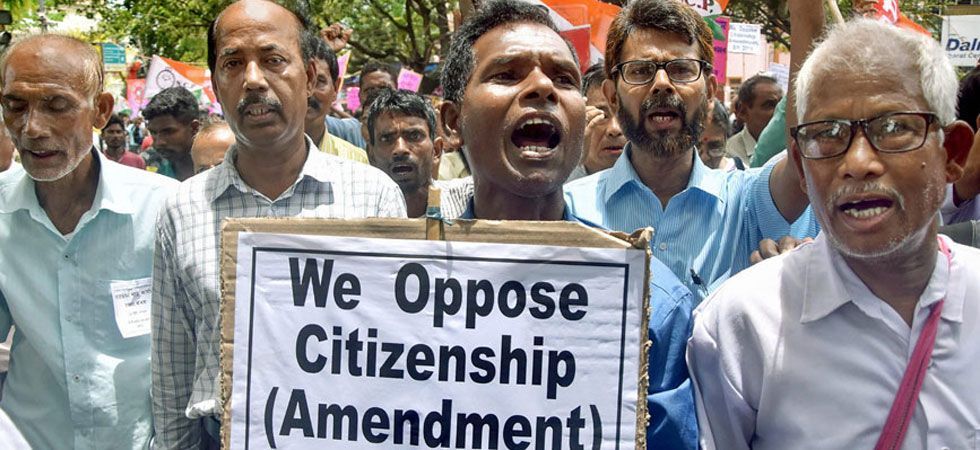
According to the Indian Express, the two controversial bills couldn’t be passed by the Rajya Sabha in the Budget session, the last Parliament session of the outgoing government. The term of the present Lok Sabha was to end on June 3, but with the election process over, President Ram Nath Kovind dissolved the lower house on Saturday.
Both the bills were opposed by the non-BJP parties in the Rajya Sabha, where the then Narendra Modi-led BJP government lacked majority.
The Citizenship (Amendment) Bill, 2019 provided for according Indian citizenship to Hindus, Jains, Christians, Sikhs, Buddhists and Parsis from Bangladesh, Pakistan and Afghanistan, who came to India before December 31, 2014, after seven years of residence in India instead of 12 years, which is the current norm, even if they do not possess any document. The critics alleged that this bill was another tactic by the right-wing Hindutva party, BJP, to further other the Muslims and move towards its goal of a ‘Hindu rashtra’.
This bill was also strongly opposed by Assam and other northeastern states on the grounds that an easy entry of Hindus from the neighbouring nations would destroy their cultural hegemony. They even claimed that this bill was against the Assam Accord, 1985, as per which any foreigner (from Bangladesh or elsewhere) – Hindu or Muslim – who entered the state after March 24, 1971, would have to be detected and deported to their country of origin.
This controversial legislation was passed by the Lok Sabha during the Winter Session on January 8 but could not be cleared by the upper house.
Even the Muslim Women (Protection of Rights on Marriage) bill, which made the practice of instant triple talaq (talaq-e-bidat) a cognizable offence, attracting up to three years imprisonment with a fine, was challenged by the opposition parties on the grounds that criminalization of the act of divorce with a jail term for the husband could be legally untenable. Some critics and activists even raised apprehensions that if the husband is put behind the bars, the wife would be left helpless with no source of maintenance. Some other sections demanded the decriminalization of triple talaq by making it only a civil offence and in line with the way divorce is dealt with in general in India.
An ordinance for this was issued in September 2018 and later a bill was introduced which was cleared by the Lok Sabha in December but was pending in Rajya Sabha. Since the Bill could not get parliamentary approval, a fresh ordinance was issued in January, 2019.
With an unexpected landslide victory of the BJP government in the 2019 Lok Sabha elections, there is a high probability that these two bills will be taken up as soon as the first session of the 17th Lok Sabha commences. Until then, the lapse can be a much needed relief!
Related Articles:
Opinion: Was Dr. Payal Tadvi victim of a hate crime?
All those who are insulting Dalits and Adivasis, humiliating them, compelling them to commit suicide, attacking them, their habitat and their land are criminals and should be dealt with under hate crime laws. The Savarna hate crime must be now on the top of the government agenda if it wants to win ‘sabka vishwas’, the trust of all.
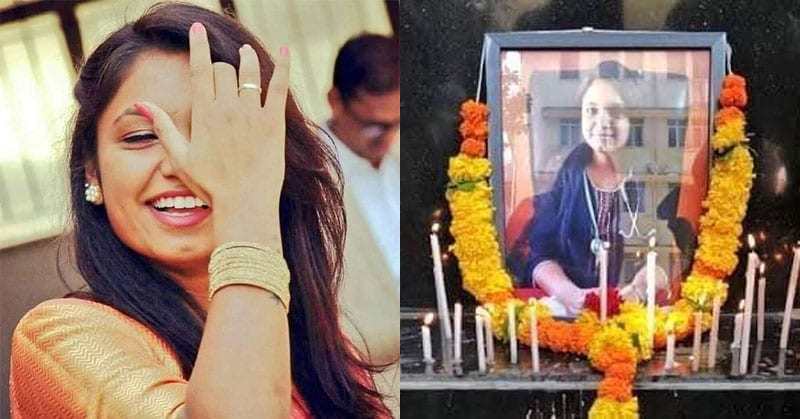
In truly technical terms Dr. Payal Tadvi committed suicide on May 22, 2019, in her hostel room in Mumbai. But for all practical reasons, I would call it a murder, a crime which was not merely of racial hatred but also looked like Islamophobia as she belonged to a tribal community practising the Islamic faith. The 26 -year-old gynaecologist was pursuing her post-graduate course and would have become the first doctor from her community. It is so difficult for the Adivasis to come up when there is so much concealed hatred.
It is reported that Payal had complained to higher authorities about the continuous harassment by her Savarna colleagues and roommates namely Dr. Hema Ahuja, Dr. Bhakti Mehra and Dr. Anikta Khandelwal who were her seniors. They would not allow her to perform surgeries and were regularly harassing and humiliating her.
Payal had informed her mother Abeda Tadvi and father Salim who lived in Jalgaon and worked in the Zila Parishad office. She was a very hard-working girl, a brave one who graduated with an MBBS degree in Gynaecology from Miraj. A report in the Hindu, quoting her husband Dr. Salman Tadvi says, “When she came to Nair Hospital for her post-graduation, she was asked to temporarily share a room with Dr. Hema Ahuja and Dr. Bhakti Mehra. The two began harassing her soon after.” “The two doctors would go to the toilet and wipe their feet on her mattress and litter it. When she would be away, they would taunt her that she was spending time with her husband,” he said.
Her mother Abeda Tadvi is a cancer patient and has been listening to her daughter and standing by her side throughout. She said, “My daughter was extremely strong. But this constant abuse eventually broke her. The three accused should be punished so that it sets an example for others who traumatise and torture students like Payal.”
How do you define this treatment of Payal by her Savarna seniors? Is this pure hate crime?
All those who are insulting Dalits and Adivasis, humiliating them, compelling them to commit suicide, attacking them, their habitat and their land are criminals and should be dealt with under hate crime laws. The Savarna hate crime must be now on the top of the government agenda if it wants to win ‘sabka vishwas’, the trust of all.
The three Savarna doctors must be prosecuted with stringent laws so that this becomes an example but we know very well that the government and its officers have never been sincere in following the constitution and implementing the rule of law. Otherwise, Dr. Payal would not have died.
Where are the institutional mechanisms to protect SC/ST students? Her death is an institutional killing like that of Rohit Vemula and the BYL Nair Hospital, Mumbai cannot give up its accountability in this regard. Why are institutional mechanisms not strong to deal with the discrimination which is rampant in our educational institutions? Why was there no ‘committee’ which could have acted against these three girls? If there is a committee then what did it do? Who are the members of the committee? Are there SC/ST members in these committees? Can we trust those committees where no member belongs to these communities?
For clarification of many, unlike the scheduled castes, the tribes have got reservation irrespective of faiths. Payal belonged to the Bhil community which has about 2.7% of people practising Islam around Maharashtra. The total number of Bhils and Gonds in India is nearly 2.8 crore, which is 27% of the total Adivasi population in India. Among the Muslim Tribal communities, 1.32 lakhs live in Jammu and Kashmir and 1.12 lakh hail from Maharashtra where Bhils are the biggest tribal community, where Islam is one of the practising faiths.
Dr. Payal was killed by the three seniors who happened to be women. She became the victim of hate crime where her tribal identity practising Islamic faith might have further aggravated her troubles.
How can the racists hate-mongers allow a tribal Muslim doctor, full of confidence and equally meritorious, stand shoulder to shoulder with them? This is the crisis that the caste Hindus suffer.
First, they blame that the SC/ST don’t have merit and when people come and join them, they become so notorious that they create obstacles so that these students leave their courses mid-way and return home. Those who remain in the institutions are continuously harassed in the hope they will give up. Payal did not leave the hostel and decided to stay put. There is a limit to one’s patience. She was after all just 26-years-old with no one to help her or even console her. This is what girls from Dalit Adivasi communities face when they are in these Manuwadi institutions. The whole atmosphere in these so-called institutions of merit is so suffocating with Brahmanical arrogance that it kills the students from the Dalit Bahujan Communities.
With increasing Brahmanisation in these institutions, further obstacles are being created so that students don’t come up and leave. That is a strategy by the Savarna elite where the institutions and their caste owners are a party to hate crime. Will Maharashtra government act and get this case heard in a fast track court so that the hate criminals get the maximum punishment? Let the government develop a mechanism in all our colleges, universities, institutions as well as offices like women cell, develop special cell for SC/ST communities so that such murders are not repeated and India shows its commitment against caste and race-based prejudices which are the order of the day.
Our salute to Dr. Payal Tadvi. Her fighting spirit will remain alive and her death will always remind us of the grave nature of discrimination that exists in our minds and body against Dalits and Adivasis. We will remain the most barbaric, uncivilised and highly prejudiced society if India does not address this issue with honesty. With so many people being kept outside humanity’s reach and the denial of justice to them will never make us a great nation. Time to show real intent to fight against hate crimes against Dalits and Adivasis.
Unfortunate! Muslim couple denied ambulance, forced to carry son’s body home, Uttar Pradesh
Shahjahanpur: In yet another unfortunate incident, a Muslim couple was denied an ambulance, to carry their ailing son, by a local hospital in Shahjahanpur, Uttar Pradesh, which led to his death. The incident took place on Monday night.

As reported by NDTV, the couple had taken their son, Afroz, to a local hospital after he was diagnosed with high fever. The doctors advised them to take Afroz to Lucknow for better treatment, after which they requested for an ambulance. However, they were reportedly not provided with an ambulance, neither did they have any money. Helpless, the couple began walking, carrying their child, and he allegedly passed away while they were on the way home.
“We took our child to the hospital in the morning. The doctors told us to take him elsewhere for treatment. We asked them for a vehicle but they refused. There were three ambulances parked in the premises. I do not know why we were denied one,” the father alleged.
Predictably, the doctors have rebuffed the allegations. The emergency medical officer, Anurag Parashar, said, “A child named Afroz came to the hospital at 8:10 pm. His condition was not well, so we directed the parents to take him to Lucknow for special treatment. They scoffed saying they will take him wherever they wish and left with the kid.”
While the allegations have not yet been proved, there is certainly an urgent need for a thorough investigation. It is also crucial to probe whether there is some communal angle associated with this untoward incident.
Related Articles:
The top court of India has been sending warnings to National Green Tribunal. Will it listen?
In the recent past, the Supreme Court has lent color of greater depth than perhaps ever before, to the jurisprudence surrounding the National Green Tribunal. It is a serious concern that across the spectrum of strict interpretation of environmental laws on the one hand and liberal on the other, the Supreme Court, in these judgments has decided against reposing faith in the NGT as an institution. The displeasure expressed by the Highest Court of this land should be taken as a warning on various levels.

First of all, as a warning that nothing but the stringent-most application of reasoning will suffice when it comes to deciding issues involving destruction of the planet. And secondly, as a warning that environmental law is no more to be treated as a juvenile field of law, and the words as well as principles of environmental law must not be treated casually under any circumstance.
On the stricter end of the interpretation spectrum is the judgment by a Supreme Court bench of Justices R.F Nariman and Naveen Sinha in the case of Tamil Nadu Pollution Control Board versus Sterlite Industries (I) Ltd. & Others dated the 18th of February, 2019. The subject matter of this batch of Appeals before the Court was the operation of a copper smelter plant at the State Industries Promotion Corporation of Tamil Nadu Ltd. (SIPCOT) Industrial Complex at Thoothukudi, Tamil Nadu, by Vedanta Limited. This is the same plant which was the subject matter of great social unrest and upsurge last year.
These appeals principally arose from two judgments passed by the NGT, in both of which it allowed Vedanta to operate its plant, deciding against the petitioners who raised serious concerns with respect to the seemingly perpetual pollution caused by the plant since it began operations in 1997. Of particular concern is the judgment of the NGT dated 15th of December, 2018, passed by the NGT in the case of Vedanta Limited versus State of Tamil Nadu & Others.
In this judgment, the NGT was hearing an appeal filed by Vedanta against a group of orders issued by the Government of Tamil Nadu directing closure of its Copper Plant. The NGT, in its wisdom, decided to refer the entire dispute to a Committee consisting of a retired Judge and two technical members for hearing and recommendations. On receiving the report of the committee which suggested, among various measures to mitigate the pollution caused by Vedanta, that the closure orders issued by the Government of Tamil Nadu were not valid, the NGT was swift to pass judgment, accepting almost all recommendations made by the committee. The result was the judgment dated 15th December, 2018, where the NGT allowed the operation of Vedanta’s Copper Plant at Thoothukudi.
Almost immediately thereafter, the Government of Tamil Nadu decided to go in Appeal against this judgment before the Supreme Court. The judgment, penned by Justice Nariman, is a fine example of plain or in other words, black & white interpretation of the law. The judgment did not go into the merits of whether the copper plant caused pollution to attract closure or not. However, the judgment shed considerable amount of light on the limitations of the NGT as a Tribunal exercising its appellate powers over decisions made by Government Authorities. The court repeatedly stressed on the fact that the NGT did not have jurisdiction to even hear the appeal because of the availability of another subordinate dispute resolution forum, the Appellate Authority of the Tamil Nadu Pollution Control Board. As per the law, it is this Appellate Authority which is to be approached before the NGT, when any decision of the Pollution Control Board is to be challenged. The orders to shut down operations which were issued by the Board must have been therefore challenged before this Authority. However, as the Court noted, the NGT passed judgment in the case before the Authority could even decide the issue. In doing so, according to the Supreme Court, the NGT overstepped its jurisdiction as laid out under the NGT Act of 2010.
The judgment clearly states that no jurisdiction could have been exercised by the NGT where none was provided for under the law of the land, irrespective of the failure of the Appellate Authority to decide the matter in a time bound manner. The Supreme Court therefore set aside the judgment of the NGT and gave all the parties before it the liberty to approach the Madras High Court to seek and obtain relief.
The signal sent by the Supreme Court in the Vedanta case is clear. The NGT may be an expert institution having a mandate to decide on questions of what is sustainable and what isn’t, but in the end, it is a statutory Tribunal which could not possibly have reviewed and set aside orders passed by the Government under in its capacity as an appellate tribunal. This was especially when the law never allowed the NGT to take up such a case in the first place.
As a side note, one would also wonder why the NGT, being an expert institution, felt the pressing need to refer the entire case brought before it to a committee having the same kind of constitution as the Appellate Authority of the Tamil Nadu Pollution Control Board. The level of concern compounds when one notes that this committee constituted by the NGT operated from the Southern Zonal Bench of the NGT at Chennai, which has been shut for more than a year, due to lack of appointment of Judicial and Technical members to the Southern Bench. Does the new NGT under Chaiperson Justice Adarsh Goel wish to replace its zonal benches with committees lacking the institutional independence of the NGT? How long can this top down approach sustain?
Moving on to the more liberal end of the interpretation spectrum is the judgment by a Supreme Court bench comprising of Justices Dr. D.Y Chandrachud and Hemant Gupta, in the case of Hanuman Laxman Aroskar versus Union of India & Ors. dated 29th of March, 2019.
As background, the case was initially filed by a batch of petitioners against an Environmental Clearance dated 28th of October, 2015, granted for the construction of an Airport at the village of Mopa located at Pernem Taluka in North Goa, bordering Maharashtra before the NGT.
The petitioners painstakingly argued that the said Airport was given Environmental Clearance from the Central Government despite serious illegalities in the decision making process leading up to the Clearance as well as large scale concealment of information relating to forests, biological diversity, ecological sensitivity and integrity of the Airport site and surrounding areas. In other words, the Central Government failed to take note of blatant lies spoken by the Government of Goa in its application for grant of Environmental Clearance and disregarded the red flags regarding the project raised by the public as well as by various experts in the field.
About three years of fighting before the NGT lead up to the judgment of 21st August, 2018, wherein the NGT refused to set aside the Environmental Clearance and instead stipulated certain additional conditions to be followed by the Government of Goa in the process of construction and operation of the Airport.
Aggrieved, the petitioners moved in appeal against this judgment before the Supreme Court. The Court, in its judgment dated 29th of March, 2019 effectively set aside the judgment of the NGT and suspended the Environmental Clearance and directed that the project be considered afresh by the expert panel of the Central Government taking into duly taking into consideration the environmental impact of the project.
It is important to note that the Supreme Court chose not to remand the case back to the NGT but instead itself went through the entire process leading up to an Environmental Clearance under the Environmental Impact Assessment Notification, 2006, with detailed commentary on why complete and honest disclosure of information pertaining to environmental impact of a project is necessary in order to achieve the laudable Sustainable Development Goals in addition to the need for highest scrutiny by the expert panel of the Central Government taking into consideration all views raised by public and information provided by the Government of Goa. The Supreme Court directed that after the project is considered afresh by the Central Government, the case is to be referred back to it for final consideration.
If one were to read the judgment of the Supreme Court, penned by Justice Dr. Chandrachud, it would naturally seem like the work that the NGT ought to have put in, in its own judgment dated 21st of August, 2018. The Court clearly stated that absence of any consideration by the NGT with respect to the various flaws in the process leading up to the Environmental Clearance only compounded the already existing problem of lack of consideration by the Central Government. What could be more clear than the Supreme Court of India telling the NGT that it should have been more thorough, citing two past judgments of the NGT itself. The ire of the Supreme Court is clear from the following extract of its judgment:
‘121. The failure to consider materials on a vital issue and indeed the non-consideration of vital issues raises a substantial question of law leading to the invoking of the jurisdiction of this Court under Section 22 of the NGT Act 2010. The failure of process in the present case has been compounded by the absence of a merits review by the NGT.’
The court clearly stated that the NGT was mandated to duly consider the case before it as per the three principles of Sustainable Development, Precautionary and Polluter Pays and in failing to do so, it has failed to exercise its jurisdiction under the NGT Act, 2010.
Therefore, in a way, the Court strictly interprets the provisions regarding Appeal under the NGT Act, 2010 while engaging in the liberal most interpretation of what the Tribunal ought to have done once such jurisdiction was supposed to be exercised by it.
There was a time when the Supreme Court was not taking the liberty of telling the NGT what to do and what not to. The reason was simple, the NGT, being an expert institution, was equipped to arrive at a rounded resolution of an environmental dispute from a legal as well as scientific paradigm and in fact, it was passing judgments of high quality and fearless in their nature. There have been cases before the NGT in the early part of the decade, where the NGT has asked billionaire industries and massive governmental projects to shut shop. The judgments of Jeet Singh Kanwar versus MoEF & Others dated 16th of April, 2013 and Prafulla Samantrey & Another versus Union of India & Others dated 30th of March, 2012 come to mind. In the former, the NGT quashed the Environmental Clearance granted by the Central Government to M/s Dheeru Powergen Private Limited for construction of a 700 MW Coal Fired Thermal Power Plant at Korba, Chhattisgarh for reasons including that of failure of the expert panel of the Central Government to properly consider the environmental impact of the project.
In the latter, the NGT effectively suspended the Environmental Clearance granted by the Central Government to M/s POSCO India and directed for fresh consideration of the project by the Central Government for reasons including failure to duly conduct Public Hearing and carrying out Appraisal of the project by the Government.
The NGT back in 2011-13 can very well be characterized as an institution which was fearless and uncompromising in meeting its mandate of providing expert environmental justice to common Indians. Those were the days when a bench of just two or three members of the NGT did not hesitate to show the door to massive scale projects for their failure to comply with environmental norms. Today’s NGT is far more reluctant in passing judgments, let alone considered judgments and instead seems keen on disposing off cases and forming committees to deal with environmental issues.
However, the NGT, with the recent warnings issued by the Highest Court of the land may be well advised to look back into its own past and begin continuing the trend of fearlessness established at a time when a lot of people of my generation were taking their Board Examinations.
Courtesy: Counter View
